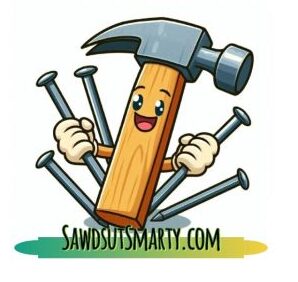Jumping into the world of woodworking is like stepping into your own creative backyard. With the right tools, that backyard becomes a personal playground where ideas turn into finished projects. Whether you’re sketching out a sleek bedside table or adding the final touches to a custom shelf, having a set of essential woodworking tools by your side is the difference between just tinkering and building something you’re proud of.
Of course, walking into a tool store can feel overwhelming. Rows of shiny gadgets make it hard to know where to start. That’s why understanding the true must-haves is so important. These are the tools that every woodworker—whether a total beginner or a seasoned DIYer—keeps close at hand because they make almost every project easier, safer, and more enjoyable.
And it’s not only about smoother cuts and cleaner finishes. Having the right gear also means working efficiently and protecting yourself in the shop. Mastering the basics sets a strong foundation for the bigger, more intricate projects you’ll take on down the road—the kind of builds you’ll want to show off in your living room or gift to friends.
So, let’s look at the five tools that have become staples in workshops everywhere. Each one stands out for its ability to save time, boost precision, and turn woodworking from guesswork into craftsmanship. Without them, even the best blueprint can end up a frustration instead of a finished piece.
Affiliate Disclosure
This article contains affiliate links. As an Amazon Associate, I earn from qualifying purchases. If you click a link and make a purchase, I may receive a small commission at no extra cost to you. Your support helps me continue creating woodworking guides and tutorials.
The Top Five Essential Tools for Woodworking
Diving into the heart of woodworking means equipping yourself with a handful of tools that can tackle just about any project. These aren’t random gadgets — they’re the go-to essentials that bring your ideas to life. So, what are the five essential tools every woodworker should own? Let’s break it down:
-
Power Drill – Versatile and efficient, the power drill handles everything from quick fixes to major builds. Look for a cordless model with multiple speed settings so you can drill holes, drive screws, and switch between projects without slowing down.
-
Circular Saw – A true cutting powerhouse. Whether you’re framing, building furniture, or trimming lumber, the circular saw delivers clean, precise cuts. Lightweight models with plenty of power give you the flexibility to handle both rip cuts (with the grain) and crosscuts (against the grain).
-
Measuring Tools – Accuracy is everything in woodworking. A solid tape measure, a reliable combination square, and a level are non-negotiables. These keep your projects straight, square, and frustration-free — no more lopsided shelves or uneven joints.
-
Chisel Set – A good set of chisels is indispensable for fine-tuning details. From sculpting decorative elements to cleaning out joints, having a range of sizes ensures you’re ready for both delicate work and heavier cuts.
-
Workbench – Think of the workbench as command central for your shop. A sturdy bench provides stability for every project and often includes built-in vises or storage to keep tools organized and close at hand.
With these five essentials in your workshop, you’re setting yourself up for woodworking success. Each tool plays a crucial role in transforming raw materials into finished pieces, ensuring efficiency, precision, and craftsmanship in every project.
The Most Useful Tool in Carpentry: Spotlight on the Circular Saw
When it comes to carpentry, one tool stands head and shoulders above the rest: the circular saw. Known for its power, precision, and portability, it’s earned a permanent spot in almost every workshop.
What makes it so valuable is versatility. The circular saw handles both rip cuts (along the grain) and crosscuts (across the grain) with ease, giving you the ability to tackle everything from sleek tabletops to custom shelving. With the right blade, it can even cut through materials beyond wood, including metal and plastic.
Portability is another big win. Unlike bulkier machines, the circular saw goes where the project is — from shop benches to job sites — without slowing you down. Pair that with straightforward operation, and even beginners can quickly gain confidence using it.
In short, investing in a circular saw is like adding a trusted partner to your woodworking journey. With safety in mind and a little practice, you’ll find it’s one of the most indispensable tools you’ll ever own.
Woodshop Safety: 5 Deadly Don’ts to Always Remember
Every woodshop is packed with creative potential — but it also demands respect. Skipping safety steps isn’t just careless, it’s dangerous. To keep your projects fun and safe, here are five critical “don’ts” every woodworker should follow:
-
Don’t skip protective gear
Goggles, gloves, and dust masks are your first line of defense. They might not feel glamorous, but they’ll save you from splinters, sawdust, and avoidable injuries. -
Don’t use dull tools
Blades and bits that have lost their edge are more likely to bind, kick back, or force you into unsafe habits. Keep everything sharp for cleaner cuts and safer work. -
Don’t work in poor lighting
A dim shop makes it easy to miss measurements or misjudge cuts. Bright, even lighting helps you see details clearly and keeps accidents at bay. -
Don’t let clutter take over
A messy workspace isn’t just an eyesore — it’s a hazard. Tripping over scraps or fumbling through tools can lead to costly mistakes or injuries. -
Don’t rush the process
Pressure and haste are behind many shop accidents. Take your time, measure twice, cut once, and double-check your setups before turning on a tool.
By keeping these simple rules in mind, you’ll protect yourself and create a safer space where you can focus on what really matters — building projects you’re proud of.
More Resources for Woodworkers
-
Easy-to-Build Birdhouses – Beginner-friendly projects to practice your skills.
-
Woodworking Plans and Projects – A wide variety of ideas to keep your shop busy.
-
The Woodworking Bible – A comprehensive guide to techniques, tools, and tips.
-
Woodworking Projects for Beginners – Simple builds to help you get started with confidence.
Here’s another great source for Woodworking Plans and Tutorials.
The Strategic Approach to Building Your Perfect Tool Kit
Starting your woodworking journey is exciting, but filling your shop with every tool at once can be overwhelming—and expensive. The smarter strategy is to build your tool kit step by step, adding new tools as your skills and projects grow.
Begin with the essentials, like a power drill and circular saw. These core tools will carry you through dozens of beginner projects, from simple repairs to your first pieces of furniture. As your confidence builds, expand your arsenal with tools like a jigsaw or router for more detailed and creative work.
Quality matters just as much as quantity. Durable, well-reviewed tools may cost more upfront, but they’ll save you money and frustration in the long run. Take time to research, compare options, and choose tools that fit both your budget and your workspace.
Practicality is key. Don’t buy for the shop you wish you had—buy for the projects you’re actually tackling. Over time, you’ll create a personalized collection of tools that feels efficient instead of cluttered.
By pacing your purchases and focusing on quality, you’ll end up with a workshop that grows alongside your skills—and a setup that makes woodworking more enjoyable every step of the way.
Final Thoughts: Building With Confidence
Woodworking doesn’t require a shop packed with fancy gadgets to get started. With just a handful of essential tools, you can take on projects that are practical, creative, and deeply rewarding. A power drill, circular saw, measuring tools, chisels, and a sturdy workbench form the foundation of nearly every successful build.
From there, it’s all about growth—adding tools as your skills expand and your projects get more ambitious. If you’re just starting out, check out Build Your First Birdhouse for a simple project that matches perfectly with these basic tools. As you build, keep in mind that the right gear makes all the difference—our guide to Essential Tools Needed for Building an Electric Guitar Kit shows how investing in quality pays off no matter what you’re creating. And of course, safe habits are key; Common Mistakes to Avoid When Building a Clock offers lessons that apply to almost any project.
Bottom line: start with the basics, invest in quality, and build your toolkit at your own pace. With the right tools in hand, every project becomes an opportunity to sharpen your craft and enjoy the process of creating.
Happy building!




This was a great read! I appreciated how you broke down the essential tools for woodworking, especially highlighting the versatility of the circular saw. Your emphasis on the importance of measuring tools and a sturdy workbench really resonated with me. I’m curious, do you have any recommendations for beginners on selecting the right chisel set? Thanks for sharing these insights!
Thank you for your comment, Bob Lynch… the only recommendations for beginners on selecting the right chisel set would be is too ALWAYS make sure your tools are clean and sharp before using. A dull chisel can be more dangerous than a sharp one. Take your time and learn how to use your shop tools correctly and safely.
Thanks again…
Wayne
It’s interesting to see how different woodworkers prioritize their essential tools: some swear by power tools while others lean heavily on hand tools. I’m curious, how did you narrow down this particular list? Do you think a beginner should invest in high-end versions of these tools right away, or start with budget-friendly options? In my experience, even a simple hand plane can drastically improve the finish quality, but the learning curve can be steep without proper guidance. I’d love to know what criteria you used when evaluating these tools: durability, versatility, ease of use? It’s a great conversation starter for anyone looking to set up a solid foundation in woodworking.
Thank you for your comment Slavisa…I narrowed this list down by the tools that I use most often in my personal shop. In my opinion, I believe a beginner should at least purchase tools somewhere in the middle; not too expensive but yet good quality tools they can grow their skills into. You are exactly right about the hand plane… it can improve the finish quality, but the important thing to know is, take your time and learn how to use your tools properly and safely!
Thanks again!
Wayne